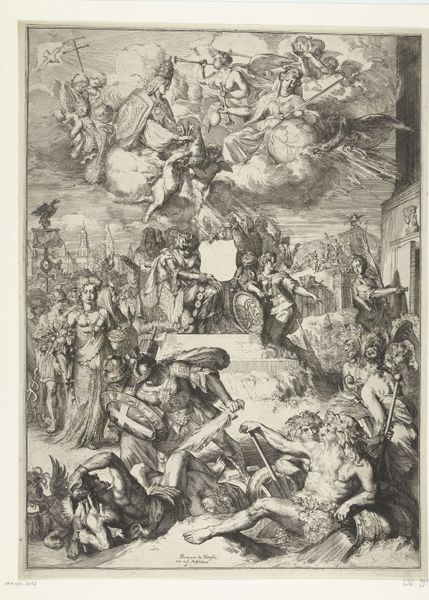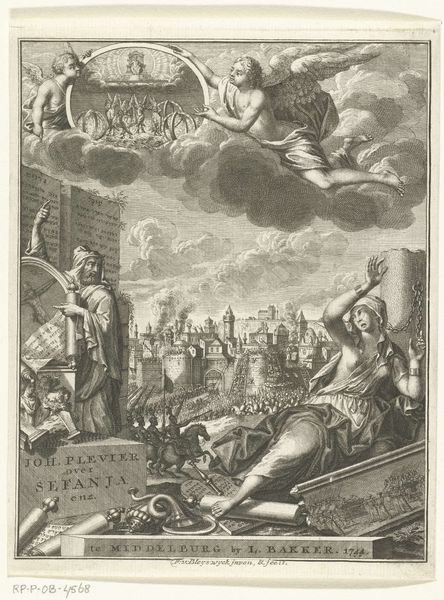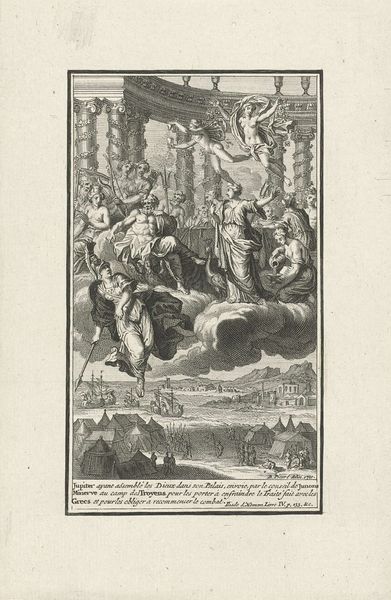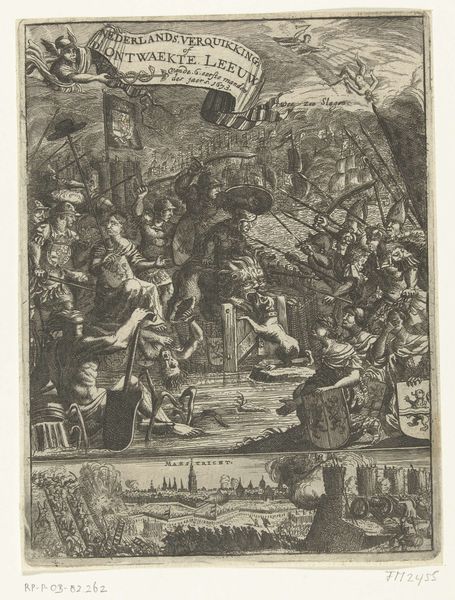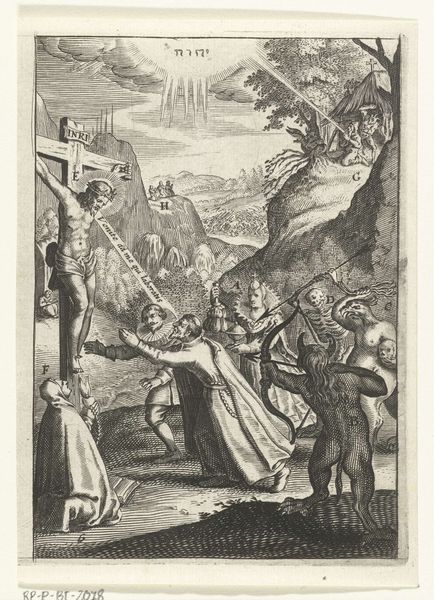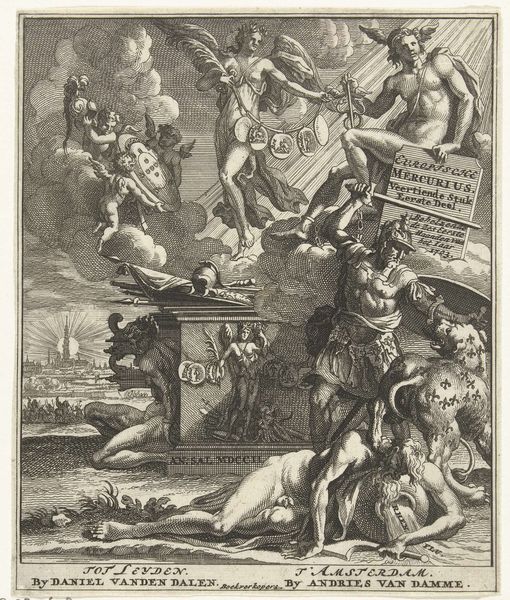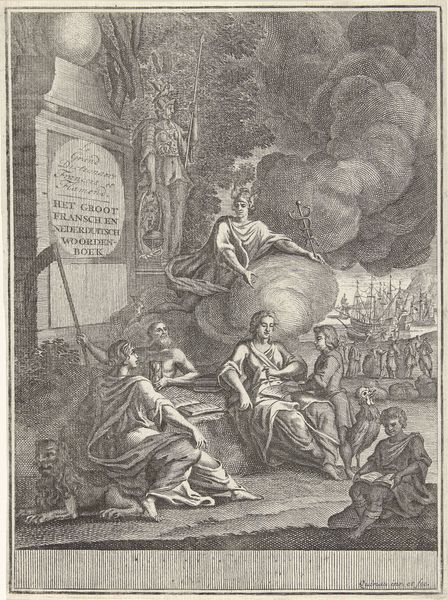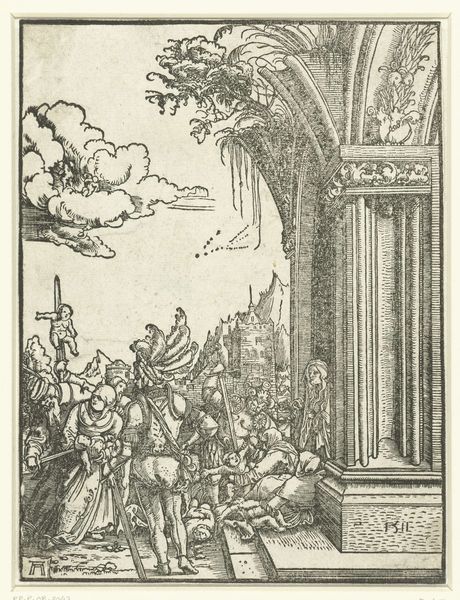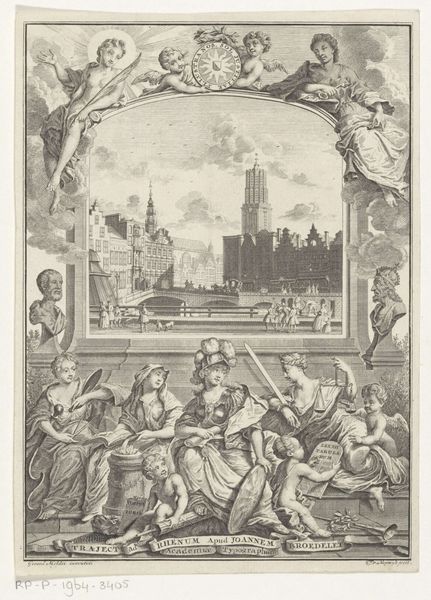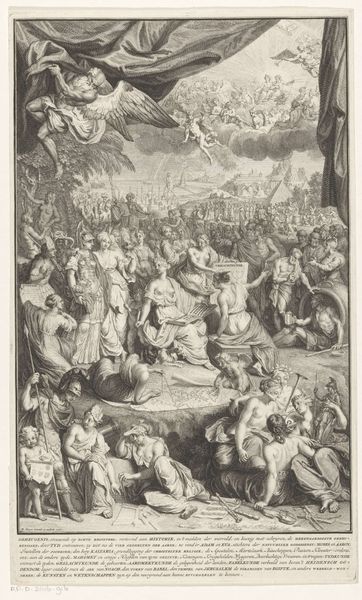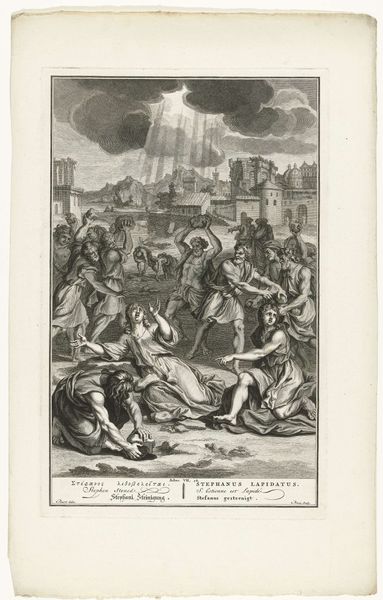
print, engraving
#
narrative-art
#
baroque
# print
#
old engraving style
#
cityscape
#
history-painting
#
engraving
Dimensions: height 148 mm, width 101 mm
Copyright: Rijks Museum: Open Domain
Curator: Here we have an engraving from between 1707 and 1709, titled *Frederik Hendrik rijdt in triomfwagen Den Haag binnen, 1629.* It depicts Frederik Hendrik’s triumphant entry into The Hague. Editor: It's a dense image! My eye is immediately drawn to the contrast between the very earthly procession and the fantastical scene playing out above the city. The triumphant return versus what appears to be divine affirmation? Curator: Precisely. Note how the artist, though anonymous, uses the conventions of Baroque art to convey power. Consider the layering of the composition. Frederik Hendrik is quite literally riding in triumph, while the architecture signifies the ordered society he protects. Editor: It's all carefully constructed propaganda, wouldn't you say? Even the angelic figures overhead—blowing trumpets and carrying wreaths—feel like carefully chosen symbols designed to legitimize and exalt Frederik Hendrik’s rule. What socio-political forces shaped its imagery? Curator: The House of Orange needed to cement its power, and images like these helped do just that. Prints circulated widely, and an image of a ruler being greeted by angels could shore up a ruler’s authority and validate their power in the public imagination. Editor: I wonder how this scene resonates with viewers today, given contemporary understandings of power and representation. The portrayal seems inherently biased toward elite perspectives, overshadowing any dissenting voices or realities of the time. What does this triumphant depiction hide about the experience of common people? Curator: The artist creates a myth of consensus through visual language. The engraving encourages its audience to embrace a singular vision of a specific time in history. This artwork also prompts us to examine who controls these visual narratives. Editor: It certainly does, and prompts us to further challenge the supposed objectivity and permanence of the historical record itself. We are given so much to consider, viewing artworks in person can expand our understanding.
Comments
No comments
Be the first to comment and join the conversation on the ultimate creative platform.
